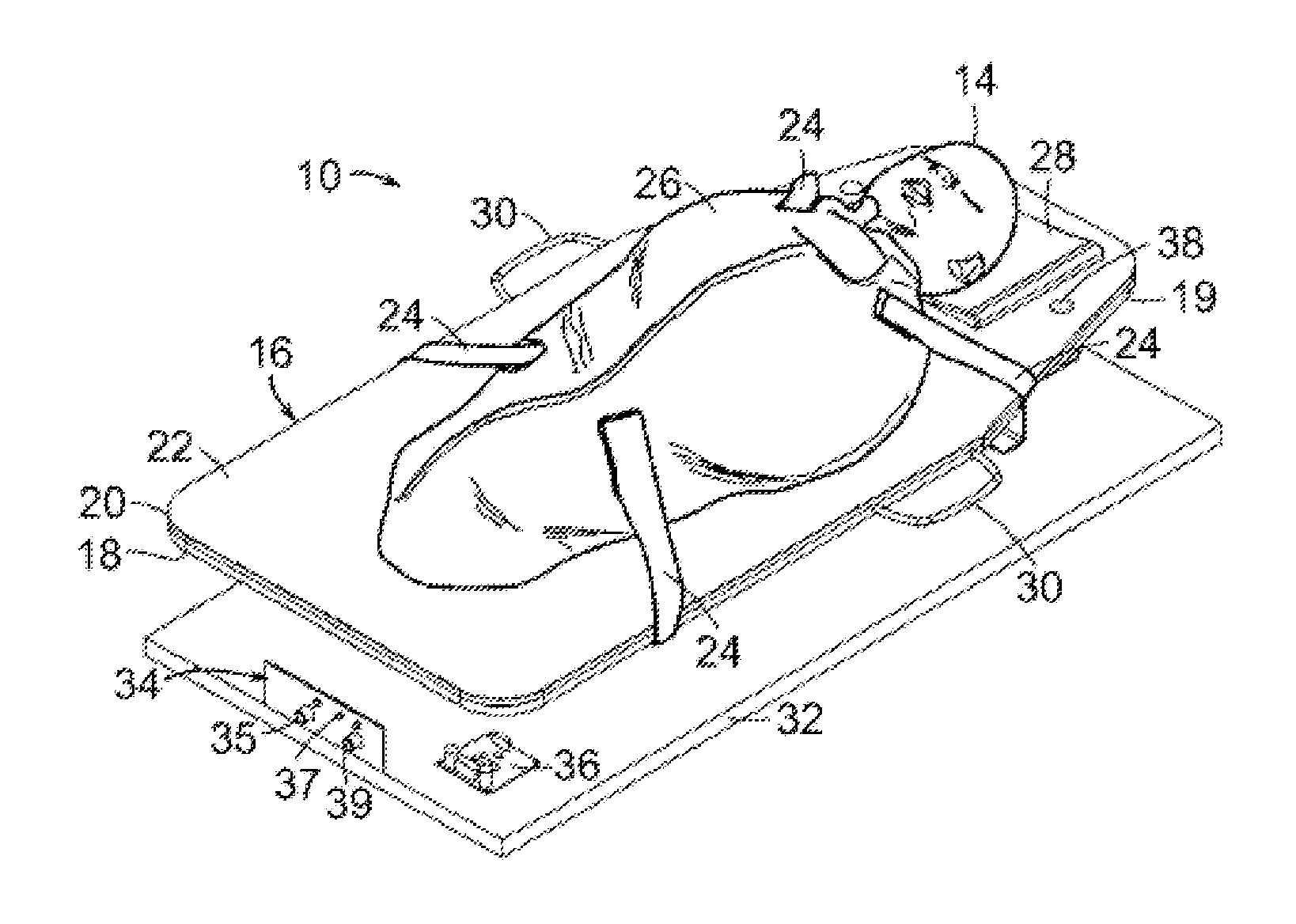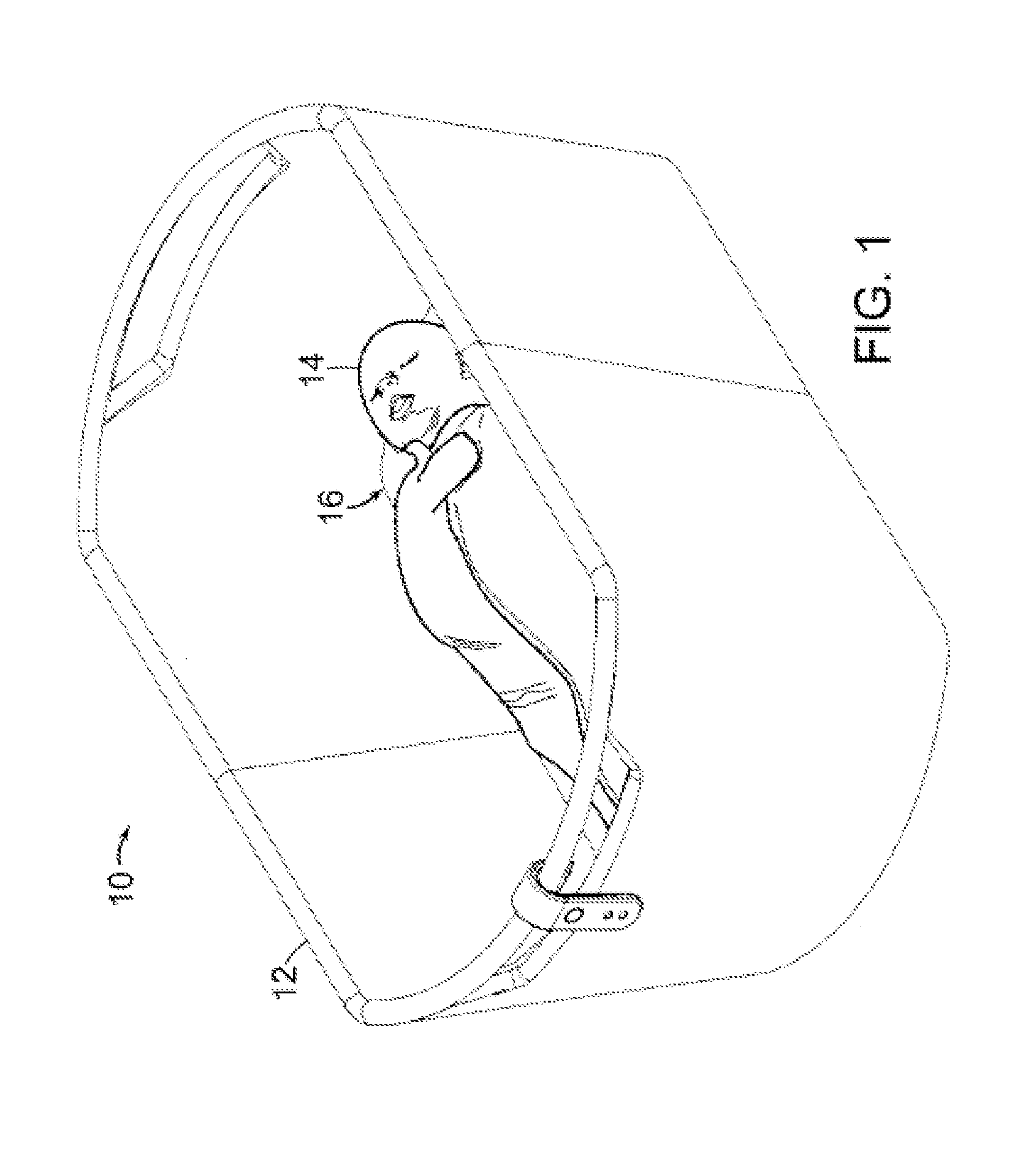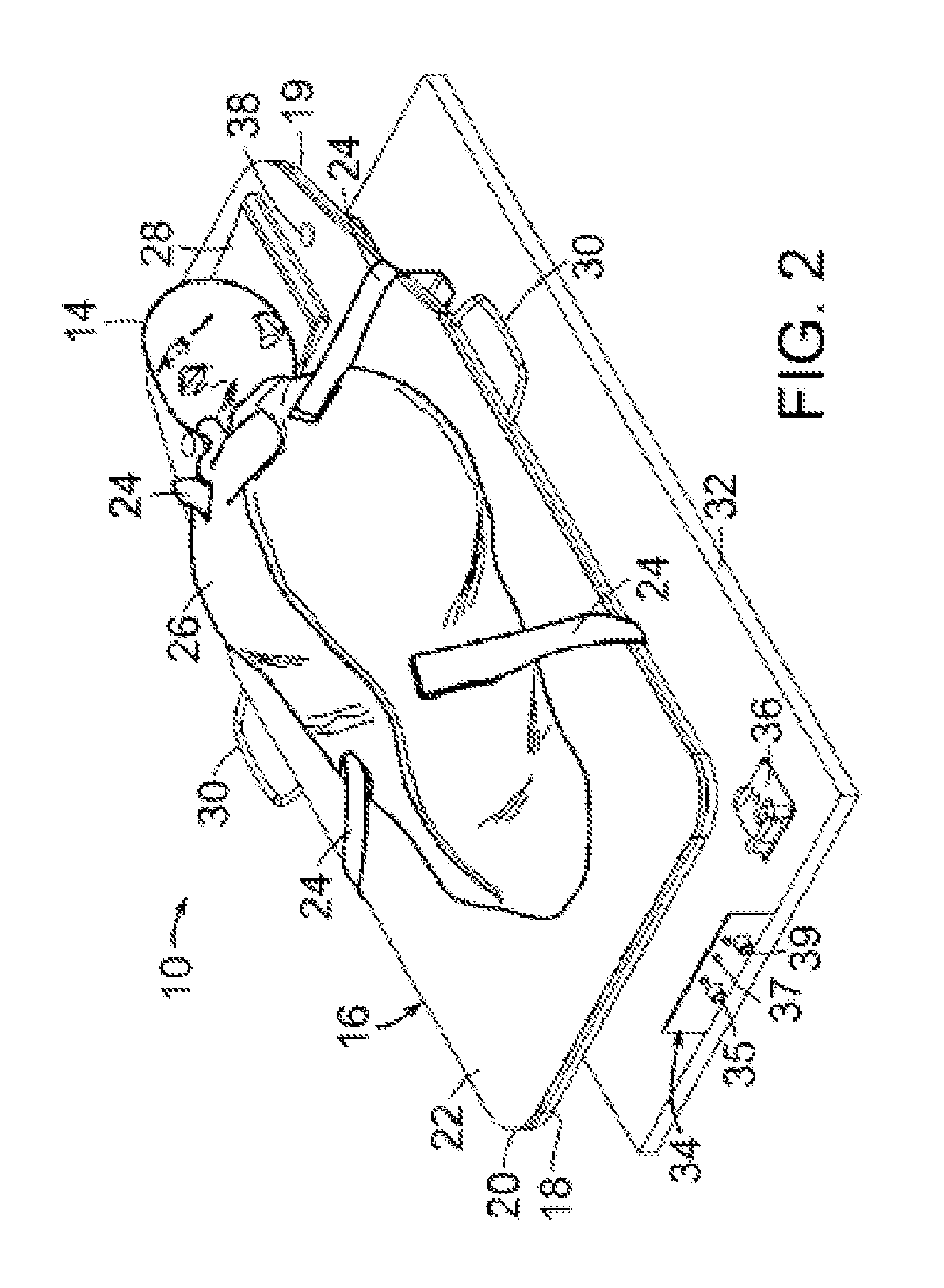Infant crying and parental exhaustion are often demoralizing and directly link to marital conflict,
anger towards the baby and impaired job performance.
In addition, they are primary triggers for a
cascade of serious / fatal health sequelae, including
postpartum depression (which affects about 15% of all mothers and about 25 to about 50% of their partners),
breastfeeding failure, child abuse and
neglect, infanticide, suicide, unsafe sleeping practices, SIDS / suffocation,
cigarette smoking, excessive doctor visits, overtreatment of infants with medication, automobile accidents, dysfunctional bonding, and perhaps maternal and infant
obesity.
Swaddling also inhibits startling and flailing, which often interrupts sleep and starts / exacerbates
crying.
Since the
nominal level of a stimulus needed to reach the triggering threshold of the calming
reflex differs from one child to the next, failure to exceed a particular child's threshold level often results in a total absence of a calming response.
For example, slow smooth motion may calm one upset infant, yet be too subdued to calm another.
Likewise, moderately loud sound (e.g., at a level of about 78 dB) sound may reach the calming threshold for one child, but be insufficient to calm another.
However, despite the convenience,
efficacy and availability of swaddling, rhythmic motion and sound, these methods fail to calm and promote sleep in a large portion of the infant
population because they are not being applied correctly.
However, this is problematic because sharing a
bed with a parent has been proven to raise an infant's risk of Sudden Infant Death Syndrome (SIDS) and accidental suffocation (which the US Centers for
Disease Control reports has been increasing by 14% per year for approximately twenty years).
The
hazard of
bed sharing is further elevated if the parent is extremely fatigued.
Like inebriation, exhaustion reduces adult judgment and responsiveness.
For this reason,
bed sharing with an exhausted parent increases the SIDS risk and the suffocation risk (from accidental overlaying of the parents body over the infant's head, pulling
bedding over the baby, etc.).
Other behaviors that stressed, exhausted parents engage in also directly raise the risk of SIDS and suffocation (e.g.
cigarette smoking, cessation of
breast feeding, falling asleep with the baby on a couch, placing the baby on the
stomach to sleep).
However, cribs too can be problematic.
Babies sleeping supine in cribs have a higher risk of plagiocephaly (flattening of the
skull), which may require expensive and inconvenient
medical treatment, and may result in permanent
deformity.
In an attempt to improve
infant sleep in cribs, parents have employed several methods (prone sleeping, swaddling, rocking motion, sound), however each is problematic.
Unswaddled babies can roll to the
stomach position (prone), which is associated with an 8-19 fold
increased risk of SIDS.
Swaddled babies can roll prone, which is associated with a 12-fold
increased risk of SIDS.
Rocking motion delivery systems (e.g. swings, cradles and hammocks) may all present problems.
The motion of
infant swings is often insufficient to calm a fussy baby and induce sleep.
When sitting in a swing, a baby's head can roll forward and create an
airway obstruction, leading to death.
Also, they can accidentally cause a supine baby to roll to the side or
stomach or become wedged into the side wall of the sleeper.
Sound delivery devices (e.g. fans, air filters, hair driers, sound machines and
white noise CDs) may be cumbersome and expensive and the volume, quality or
frequency profile of the sound they produce may be excessive or too different from
in utero sound to be effective.
These current infant calming / sleep devices typically deliver fixed and unchangeable motion and sound.
This is a problem because each baby has a different mix of sound and motion that most efficiently calms the child's crying.
Another problem with fixed motion and sound infant calming / sleep devices is that each baby has a unique level of motion and sound that induces calming and sleep most efficiently.
For example, slow rocking may reduce sleep latency for one infant, yet be too subdued to do so in another infant.
Devices that deliver constant sound may also
expose a baby to unhealthy levels of sound, if they are set at too high a volume.
Still another problem with fixed motion and sound infant calming / sleep devices is that the intensity of the stimuli needed to activate the calming
reflex and induce calm and sleep varies substantially as a child's state changes.
Further, current infant calming / sleep devices do not continue all night long; do not deliver optimal sound and motion for triggering the calming
reflex; do not increase and decrease their
sensory input in a step-wise fashion to vary the
sensory input intensity to give the baby the most effective level of stimulation with the minimum
exposure to high levels of sound; lack the ability to gradually increased the
sensory input over the first weeks of life and to gradually wean a baby off the stimuli as he or she ages.
In addition, crib death or SIDS (Sudden Infant Death Syndrome) is a leading cause of infant mortality.
Once breathing stops, the body becomes more and more hypoxemic and acidotic, leading to a downward spiral of reduced
heart rate, dropping
blood pressure, cardiovascular collapse and death.
Studies have indicated that the risk of stomach sleeping may indeed predispose babies to SIDS by reducing infant arousability.
In the
home setting, however, studies have not shown that using a cardiorespiratory monitor reduces the incidence of SIDS.
This lack of effect may be because, 1) the parent responding to the alarm may not know how to resuscitate the baby; 2) the parent may be panicked and incapable of resuscitating the baby; 3) the baby may be so hypoxic and acidotic, that, by time the parent arrives at the scene, an irreversible cardiorespiratory collapse has already been precipitated.
 Login to View More
Login to View More  Login to View More
Login to View More 


